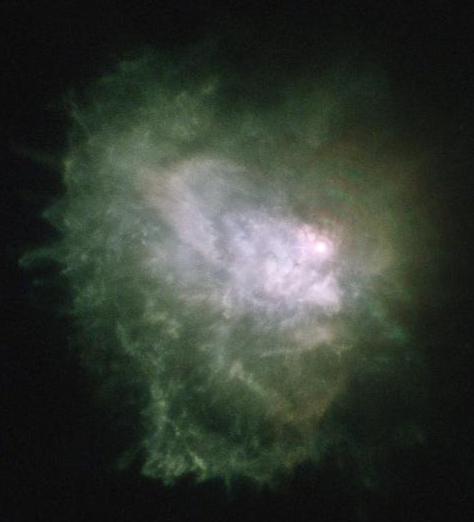What is a Hypergiant Star?
 Michael Anissimov
Michael Anissimov
Hypergiant stars are the most massive and luminous stars known. Hypergiant stars comprise about 100-150 solar masses worth of material, approaching the Eddington limit, a theoretical upper limit of stellar mass, after which the star begins throwing off huge amounts of material due to its great radiation. However, there are some hypergiant stars with around 100 solar masses that are thought to have once weighed 200-250 solar masses, challenging current theories of star formation. Hypergiants may be thousands up to 40 million times more luminous than our Sun.
Because hypergiants are so massive, their cores are extremely hot and pressurized, leading to rapid nuclear fusion of hydrogen, helium, carbon, neon, oxygen, and eventually silicon. As silicon fuses to iron the core, a process that only takes a couple weeks, the star can extract no more energy from nuclear fusion (the fusion of iron requiring even greater temperature) and a supernova occurs when the star collapses and then "bounces back" outwards. Somewhat prosaically: when a hypergiant star goes nova, it is sometimes called a "hypernova."

Hypergiant stars have a diameter between about 100 and 2100 times that of the Sun. VY Canis Majoris, a red hypergiant star, is the largest star known, between 1800 and 2100 solar diameters in width. Like main sequence stars, hypergiants come in all spectral flavors: there are blue hypergiants, red hypergiants, and yellow hypergiants. In the other side of the Milky Way galaxy is LBV 1806-20, one of the luminous blue variables, which is the most luminous star known, at 2 to 40 million times brighter than the Sun. The absolute magnitude of this star approaches that of some of the smaller galaxies.

Hypergiant stars are short-lived, existing for only a couple million years before they go nova. As a result, they are relatively rare and theories about hypergiants are restricted by scarce data. Among the hypergiants are the one of the rarest classes of stars known, the yellow hypergiants, of which about only seven exist in our galaxy.
AS FEATURED ON:
AS FEATURED ON:













Discussion Comments
The brightest star in the night sky is Sirius, which is part of the constellation Canis Major. This star can be seen in both the north and south hemispheres.
The evolutions of stars is a process of enlargement over billions of years. Once a star reaches its maximum size, it may begin to then may cause a nebula before beginning to shrink back down to become a white dwarf. This occurs only if the mass of the star isn't large enough to cause a supernova.
Proxima centauri is the nearest star to our Sun. This star is a red dwarf star that appears too small to be seen by the naked eye. It is smaller than our sun, and despite its proximity (hence the name proxima), it requires a telescope to view. It was only discovered in 1915.
Depending on the mass, collapsing stars in a supernova cause black holes. At the mass of a hypergiant, it is most likely that the gravitational pull generated by a silicon core in such a massive gravitational field will cause a large black hole. This degree of high gravity makes a hole in the spacetime continuum, drawing information out of our dimension into a parallel universe or spacetime field.
Post your comments